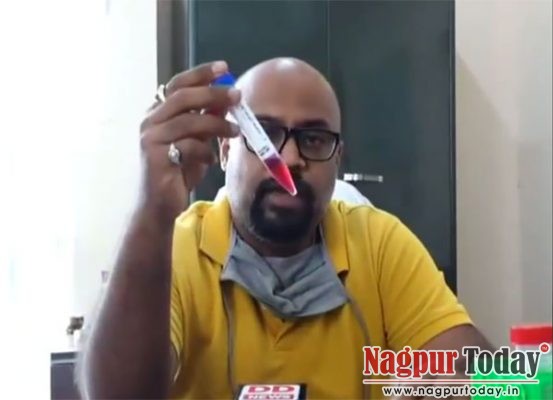
Nagpur: Scientists of Nagpur-based National Environmental Engineering Research Institute (NEERI) under the Council of Scientific and Industrial Research (CSIR) have come up with a ‘Saline Gargle RT-PCR Method’ for testing COVID-19 samples.
The test will be a relief for those who are afraid of giving nasal and throat swabs.
Features of the method:
The Saline Gargle method offers a bunch of attractive benefits, all rolled into one.
It is simple, fast, cost-effective, patient-friendly and comfortable; it also offers instant results and is well-suited for rural and tribal areas, given minimal infrastructure requirements.
Speaking to PIB, Dr Krishna Khairnar, Senior Scientist, Environmental Virology Cell, NEERI says: “Swab collection method requires time. Moreover, since it is an invasive technique, it is a bit uncomfortable for patients. Some time is lost also in the transport of the sample to the collection centre. On the other hand, the Saline Gargle RT-PCR method is instant, comfortable and patient-friendly. Sampling is done instantly and results will be generated within 3 hours.”
Here’s how it works
The method is non-invasive and so simple that the patient herself can collect the sample, explains Dr Khairnar. “Collection methods like nasopharyngeal and oropharyngeal swab collection require technical expertise; they are also time-consuming. In contrast, the Saline Gargle RT-PCR method uses a simple collection tube filled with saline solution. The patient gargles the solution and rinses it inside the tube” he said.
“This sample in the collection tube is taken to the laboratory where it is kept at room temperature, in a special buffer solution prepared by NEERI. An RNA template is produced when this solution is heated, which is further processed for Reverse Transcription Polymerase Chain Reaction (RT-PCR). This particular method of collecting and processing the sample enables us to save on the otherwise costly infrastructural requirement of RNA extraction. People can also test themselves since this method allows self-sampling,” he added.
The method is environment-friendly as well since waste generation is minimized.
#United2fightCorona@CSIR_NEERI has developed ‘Saline Gargle #RTPCR Method’ for testing #COVID19 samples; you can get the result within 3 hours
Watch Dr. Krishna Khairnar, Senior Scientist, Environmental Virology Cell, NEERI explaining how to use👇@IndiaDST@CSIR_IND pic.twitter.com/mxpYTlt7lC
— PIB in Maharashtra 🇮🇳 (@PIBMumbai) May 28, 2021












